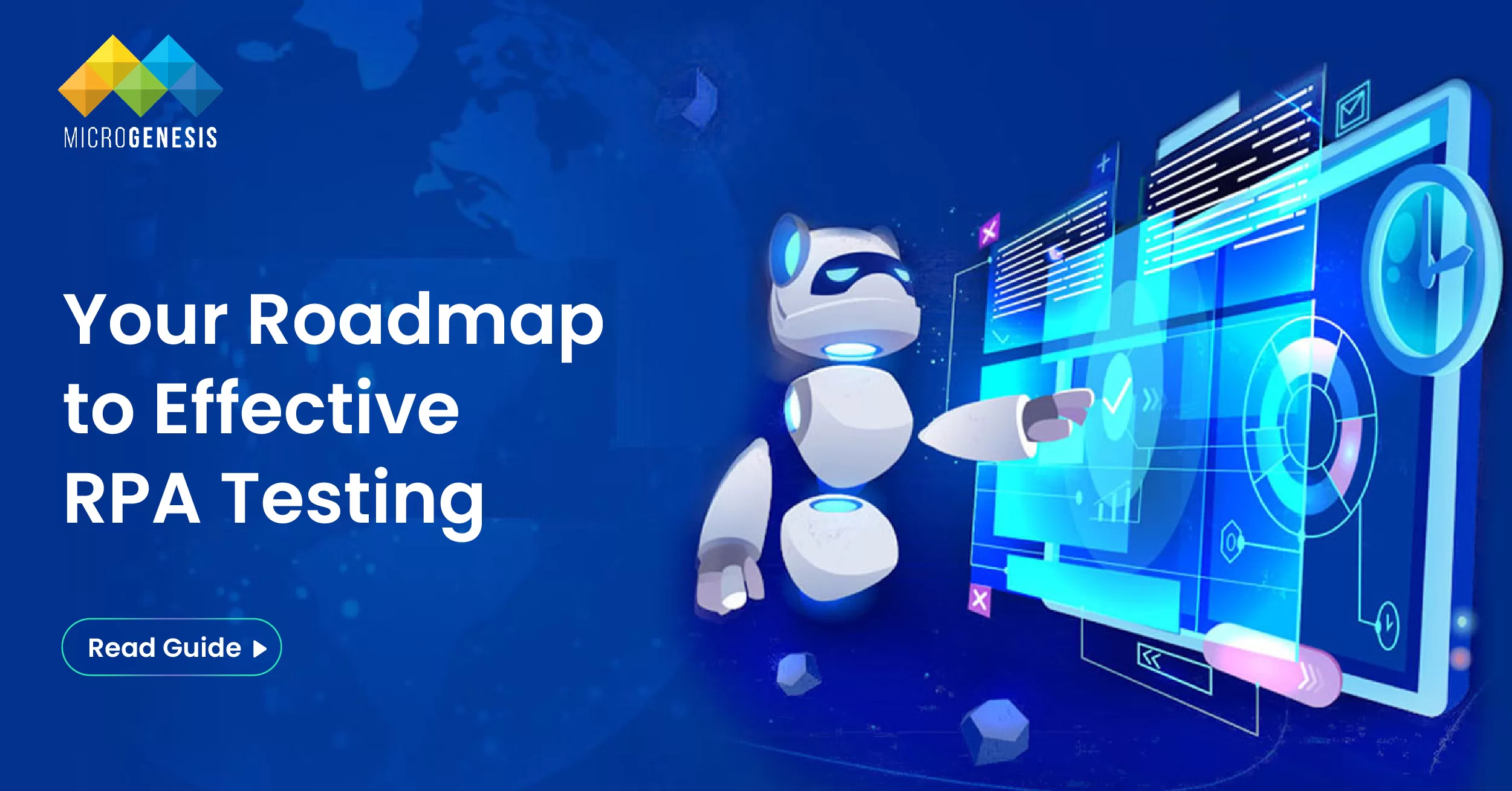Robotic Process Automation (RPA) has moved from a buzzword to a mainstream enterprise capability. Organizations in banking, healthcare, insurance, telecom, and manufacturing are adopting RPA to reduce costs, improve accuracy, and free employees from repetitive tasks.
Yet despite its promise, RPA is not a magic wand. Industry surveys show that 30–50% of RPA initiatives fail to scale beyond pilots. Why? Because enterprises often underestimate the complexities of implementation.
In this blog, we’ll explore the top 10 RPA implementation challenges organizations must be aware of—and how to overcome them.
1. Lack of Clear RPA Vision and Strategy
Many RPA projects start with excitement but no long-term strategy. Businesses automate a few processes without aligning them to broader goals like digital transformation, customer experience, or compliance.
Why this is a challenge:
- Leads to scattered automation use cases.
- Harder to prove ROI to leadership.
- Creates technical debt when bots don’t scale.
How to overcome:
- Define KPIs: cost savings, cycle time reduction, compliance improvements.
- Align RPA roadmap with business and IT strategy.
- Establish an RPA Center of Excellence (CoE) for governance.
2. Poor Process Selection
Not every process is a good candidate for RPA. Automating unstable, exception-heavy, or non-standardized processes leads to bot failures.
Why this is a challenge:
- High maintenance overhead when rules keep changing.
- Bots break often in complex workflows.
- ROI remains low due to frequent rework.
How to overcome:
- Use process discovery tools to analyze workflows.
- Prioritize stable, rules-based, high-volume processes.
- Involve SMEs early to validate automation feasibility.
3. Resistance to Change from Employees
Automation can create anxiety in the workforce. Employees often see bots as threats to job security, leading to resistance and lack of collaboration during implementation. With the right RPA consulting services, organizations can address these concerns through change management, training, and clear communication—helping employees view automation as an enabler rather than a threat.
Why this is a challenge:
- Delays in adoption.
- Knowledge hoarding by staff who fear being replaced.
- Negative perception of automation.
How to overcome:
- Communicate clearly: RPA augments humans, not replaces them.
- Involve employees in bot design and testing.
- Reskill staff for higher-value roles.
4. IT and Business Misalignment
RPA often starts as a business-led initiative, with IT brought in late. This creates friction between teams.
Why this is a challenge:
- Security risks when bots bypass IT protocols.
- Lack of infrastructure support from IT.
- Poor scalability due to disconnected ownership.
How to overcome:
- Treat RPA as an enterprise-wide initiative, not a departmental experiment.
- Build strong IT-business collaboration models.
- Set joint accountability for outcomes.
5. Infrastructure and Scalability Issues
A common pitfall is building bots that work in pilots but fail in production at scale.
Why this is a challenge:
- Poor infrastructure planning leads to downtime.
- Insufficient bot orchestration tools.
- High costs of scaling without standardization.
How to overcome:
- Plan infrastructure (VMs, licenses, orchestrators) from day one.
- Leverage cloud-based RPA platforms for flexibility.
- Standardize development and governance through an RPA CoE.
6. High Maintenance of Bots
Bots are sensitive to UI and system changes. Even a minor update in an ERP or CRM system can break bots.
Why this is a challenge:
- Maintenance costs exceed development savings.
- Business disruptions when bots fail unexpectedly.
- Poor ROI perception by leadership.
How to overcome:
- Adopt resilient design patterns (use APIs instead of UI scraping where possible).
- Regularly update regression test suites for bots.
- Establish monitoring dashboards to detect failures early.
7. Security and Compliance Risks
Bots often access sensitive financial, healthcare, or personal data. If not managed securely, they can introduce risks.
Why this is a challenge:
- Improper credential handling exposes systems.
- Lack of audit trails creates compliance gaps.
- Insider misuse of unattended bots.
How to overcome:
- Use secure credential vaults (e.g., CyberArk, Azure Key Vault).
- Enforce role-based access controls (RBAC).
- Maintain detailed bot activity logs for compliance.
8. Lack of Skilled RPA Talent
RPA requires specialized skills in process discovery, bot development, and orchestration. Many organizations underestimate the talent needed. Partnering with an experienced RPA services company ensures access to skilled professionals, proven frameworks, and best practices—helping enterprises accelerate adoption while minimizing risks.
Why this is a challenge:
- Shortage of experienced RPA developers and architects.
- Dependency on external consultants increases costs.
- Slow project delivery due to skill gaps.
How to overcome:
- Train in-house staff on RPA platforms.
- Partner with certified RPA service providers.
- Establish CoE teams with mixed business-IT skills.
Dig Deeper: Robotic Process Automation (RPA) in Manufacturing: Revolutionizing Industrial Operations
9. Unrealistic Expectations of RPA
Leadership sometimes expects RPA to deliver AI-like intelligence or to fully automate any process instantly.
Why this is a challenge:
- Disappointment when bots can’t handle complex, unstructured tasks.
- Failure to scale beyond PoCs.
- Misallocation of budgets.
How to overcome:
- Educate stakeholders on what RPA can and cannot do.
- Combine RPA with AI/ML (Intelligent Automation) for unstructured data.
- Focus on achievable ROI milestones.
10. Governance and Monitoring Gaps
Without proper governance, RPA initiatives spiral into fragmented, unmanageable silos.
Why this is a challenge:
- Shadow IT as departments build bots independently.
- No visibility into performance or compliance.
- High operational risk if bots fail silently.
How to overcome:
- Create enterprise-wide governance frameworks.
- Centralize monitoring through orchestration platforms.
- Define SLAs for bot uptime and error resolution.
Conclusion: Navigating RPA Challenges with the Right Partner
RPA offers tremendous value, but success depends on navigating these ten challenges. From poor process selection and bot maintenance headaches to security risks and scalability hurdles, organizations must treat RPA as a strategic initiative, not just a tactical fix.
At MicroGenesis, we help enterprises design, implement, and scale RPA programs that deliver measurable ROI. Our experts bring:
- End-to-end RPA consulting and implementation.
- Expertise across platforms like UiPath, Automation Anywhere, and Blue Prism.
- Frameworks for governance, compliance, and scalability.
- Managed RPA services for continuous monitoring and support.
By partnering with MicroGenesis, you avoid common pitfalls and turn RPA into a long-term business enabler—delivering speed, accuracy, and resilience at scale. As a trusted digital transformation consultant, we go beyond technology to align automation with business goals, ensuring sustainable impact. Our tailored RPA services empower organizations to optimize processes, enhance efficiency, and achieve measurable outcomes in their automation journey.




